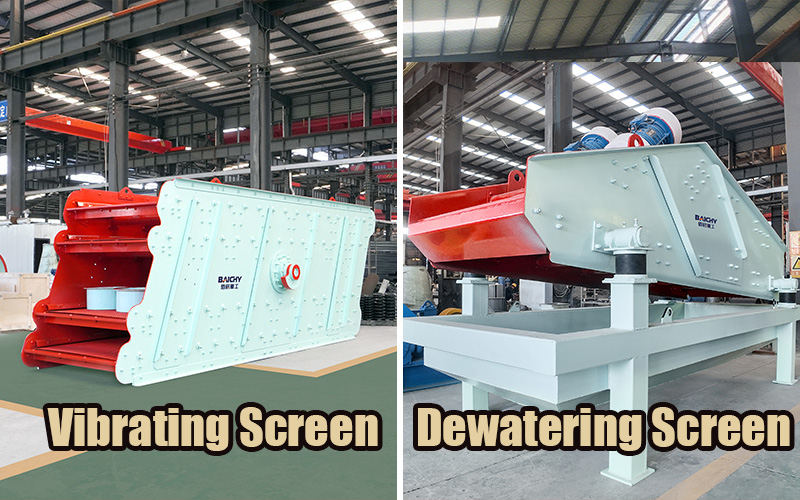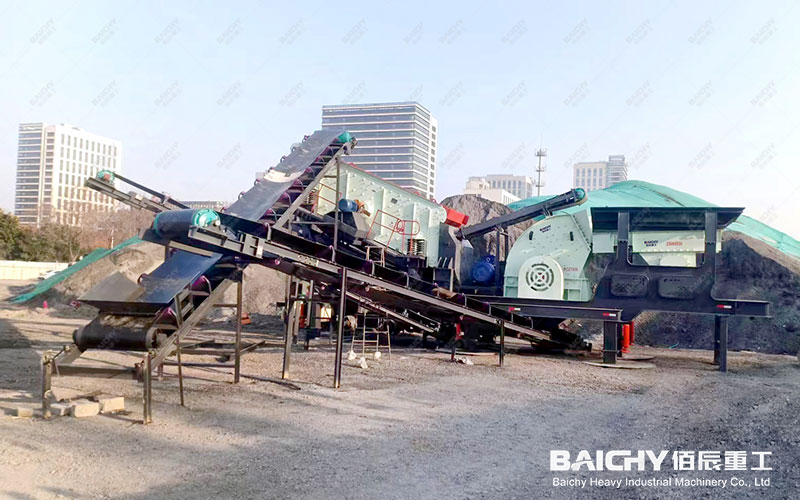
In mineral processing, dewatering is a crucial step, directly impacting concentrate grade, transportation costs, and subsequent processing effectiveness. As a core piece of equipment, the selection of a dewatering screen directly affects the stability and economy of the entire production line.
Faced with a dazzling array of equipment on the market, how do you make the best choice? This article will systematically outline seven key factors to prioritize when selecting a screen.
I. The Basis of Dewatering Screen Selection
The physicochemical properties of the material are the primary basis for selection, determining the working principle and structural design of the dewatering screen.
1. Particle Size Distribution: The particle size distribution of the material directly affects the dewatering difficulty and screen selection. Materials with a high content of fine particles (e.g., a large proportion of -200 mesh) are suitable for high-frequency, high-vibration dewatering screens; while coarse particles can be handled by equipment with larger amplitude vibrations.
2. Particle Shape and Density: Flaky or low-density lightweight materials are prone to floating, making dewatering difficult and potentially requiring equipment with adjustable inclination angles or screen pressing devices. For high-density materials, the structural strength of the screen body must be considered.
3. Viscosity and Mud Content: Materials with high viscosity and mud content are prone to clogging the screen. High-frequency dewatering screens equipped with bouncing balls or ultrasonic screen cleaning devices should be prioritized, or linear vibrating screens should be selected.
II. Processing Capacity and Dewatering
Targets Clearly defining process requirements is a prerequisite for successful selection.
• Hourly Processing Capacity (tons/hour): This is the core factor determining the specifications (width, length) of the dewatering screen. A 10%-20% margin should be reserved, considering the feed concentration and fluctuation range, to cope with production fluctuations.
• Target Product Moisture: Different moisture requirements correspond to different equipment types. For extremely low moisture requirements (e.g., <10%), a high-frequency dewatering screen or multiple units in series may be necessary; for moderate requirements (e.g., around 15%), a conventional vibrating dewatering screen may be more economical.
• Recovery Rate Requirements: When high recovery rates are required for fine particulate materials, fine-mesh screens and sufficient vibration intensity should be selected to prevent fine particles from being lost with the water flow.
III. Structure and Performance Parameters of the Dewatering Screen
The inherent characteristics of the equipment directly determine its performance ceiling.
1. Screen Surface Size and Inclination Angle: The screen width determines the processing capacity, while the length affects the dewatering time. The inclination angle affects material flow rate and residence time, and can typically be adjusted from 0° to 25° to accommodate different materials.
2. Vibration Parameters: Vibration frequency (rotation speed) and amplitude together determine the "intensity" of the screening. High vibration frequency is beneficial for dewatering fine materials, while large amplitude is beneficial for conveying coarse materials and preventing clogging.
3. Screen Type: Polyurethane screens are wear-resistant and clog-resistant, suitable for fine particle dewatering; metal screens have high strength and are suitable for large materials. The shape of the screen openings (square holes, long slots) also needs to be selected according to the shape of the material.
4. Drive Method: Vibration motor drives have a simple structure and are easy to maintain; box-type vibrators have a large excitation force and are suitable for large and heavy equipment.
IV. Process Layout and Installation Conditions
"A good horse needs a good saddle," and the equipment must perfectly match the site conditions.
• Space Constraints: The installation space (length, width, height) limits the size of the equipment and the maintenance methods. When space is limited, consider multi-layer screens or a vertical arrangement.
• Feeding and Discharge Methods: Determine whether chute feeding or pump feeding is used, and whether sealing is required for the discharge. This determines the design of the feed hopper and discharge hopper.
• Supporting Equipment: Dewatering screens are often integrated with thickeners, hydrocyclones, pumps, etc. Ensure that the capacity of the equipment is matched and that connections are smooth.
V. Energy Consumption and Operating Costs: Focusing on the Entire Life Cycle
Selection should not only focus on the initial purchase cost, but also assess the long-term operational economy.
• Power Configuration: Compare the power consumption per unit throughput (kW·h/t) of different models.
• Wear Part Lifespan: The replacement cycle and cost of wear parts such as screens and vibrators directly affect long-term maintenance costs.
• Maintenance Convenience: Is it easy to replace the screen? Are lubrication points easily accessible? These design details can significantly reduce downtime and labor costs.
VI. Reliability and After-Sales Service
Stable equipment operation is the guarantee of continuous production. • Brand and Reputation: Choosing brands with mature technology and a good reputation in the market ensures better quality.
• Key Component Quality: Inquire about the brand of the vibratory motor or vibrator, and the grade of the bearings; these are core to equipment reliability.
• Supplier Service Capabilities: This includes installation guidance, technical training, spare parts supply speed, and emergency response capabilities.
VII. Special Working Conditions and Future Needs
Allow flexibility for potential changes, making investment more forward-looking.
• Corrosion Resistance/Explosion-Proof Requirements: If handling corrosive or explosive materials, specify in advance and select special configurations such as stainless steel or explosion-proof motors.
• Intelligent Needs: Is remote monitoring, fault diagnosis, online vibration parameter adjustment, or other intelligent functions required?
• Capacity Expansion Potential: Are there future expansion plans? Consider forward-looking selection or leave room for future modifications.
Selecting a suitable dewatering screen for mineral processing is a comprehensive and systematic project requiring careful consideration. From basic material characteristic analysis to clear production targets, equipment performance, cost control, and long-term development, every aspect is crucial. We recommend thorough communication with experienced technicians or equipment suppliers, and conducting material testing if necessary. Use detailed data to support your decision-making and select the "golden partner" that will create the greatest value for you.
Take immediate action: If you are facing a dehydration screening challenge, please contact us for free technical consultation and material testing solutions!










